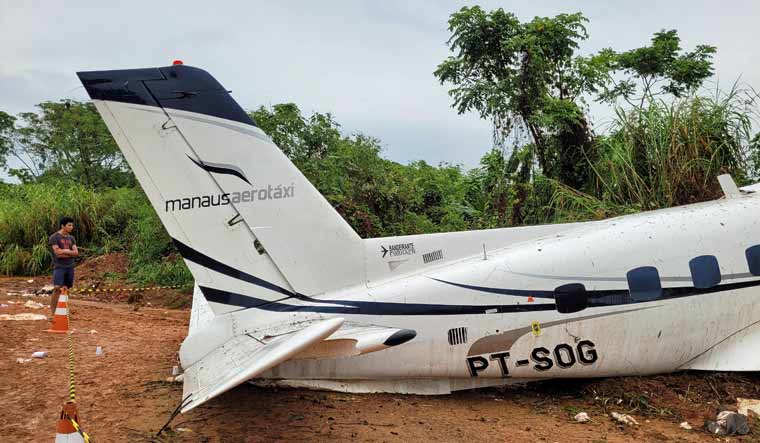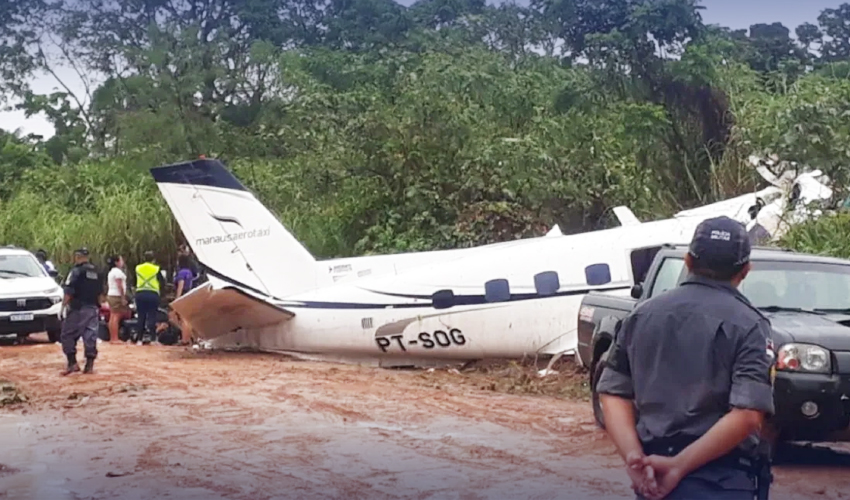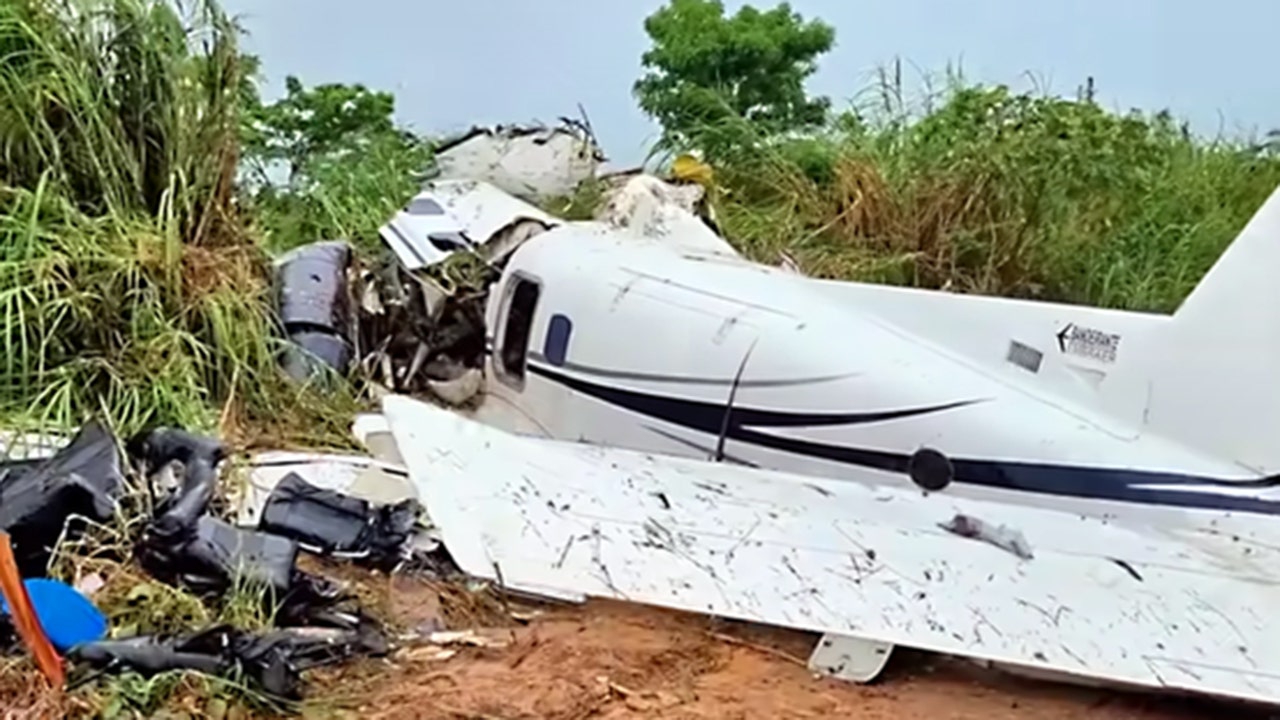Historical Overview of Brazil Plane Crashes

Brazil, a nation known for its vibrant culture and expansive landscape, has unfortunately also witnessed a history marked by tragic aviation accidents. From the early days of air travel to the modern era, plane crashes have left an indelible mark on the country, impacting lives, shaping aviation regulations, and influencing public perception. This section explores the historical context of plane crashes in Brazil, examining the contributing factors, significant incidents, and their enduring consequences.
Timeline of Major Plane Crashes
This section provides a chronological overview of some of the most notable plane crashes in Brazil, highlighting the year, location, type of aircraft, and number of casualties.
- 1946: A Douglas DC-3 aircraft operated by Panair do Brasil crashed near São Paulo, killing all 23 people on board. This incident, one of the earliest major aviation accidents in Brazil, underscored the nascent state of aviation safety in the country at the time.
- 1950: A Lockheed Constellation operated by Panair do Brasil crashed near Rio de Janeiro, killing all 50 people on board. This accident, which occurred shortly after the inaugural flight of the Constellation model, further highlighted the challenges faced by Brazilian aviation in its early years.
- 1960: A Douglas DC-6B operated by Varig crashed near Rio de Janeiro, killing 25 people. This incident, occurring at a time when Brazil was experiencing rapid economic growth and increased air travel, underscored the need for stricter safety regulations and better infrastructure.
- 1973: A Boeing 727-200 operated by Varig crashed near Paris, France, killing 123 people. This tragedy, the deadliest in Brazilian aviation history at the time, had a profound impact on both Brazilian and international aviation, leading to increased scrutiny of safety standards and maintenance procedures.
- 1982: A Boeing 737-200 operated by Vasp crashed near São Paulo, killing 137 people. This incident, one of the worst air disasters in Brazil, prompted a review of pilot training and air traffic control systems.
- 2006: An Airbus A320 operated by TAM Airlines crashed near São Paulo, killing 199 people. This accident, the deadliest in Brazilian aviation history, highlighted the importance of runway safety and emergency response procedures.
Historical Factors Contributing to Plane Crashes
This section delves into the historical factors that have contributed to plane crashes in Brazil, including infrastructure, safety regulations, and economic conditions.
- Infrastructure: Brazil’s vast geographical size and challenging terrain have posed significant challenges to aviation infrastructure development. The country’s early air travel network relied heavily on small, poorly maintained airports, which were susceptible to accidents due to inadequate runway conditions and limited navigation aids.
- Safety Regulations: In the early decades of air travel in Brazil, safety regulations were often lax and enforcement was inconsistent. This lack of stringent standards contributed to a number of accidents, prompting calls for greater oversight and stricter regulations.
- Economic Conditions: Economic fluctuations have also played a role in aviation safety in Brazil. During periods of economic hardship, airlines have sometimes cut corners on maintenance and training, compromising safety in an effort to reduce costs.
Impact of Significant Crashes on Brazilian Aviation and Society
This section examines the impact of significant plane crashes on Brazilian aviation and society, including changes in regulations, public perception, and technological advancements.
- Changes in Regulations: The aftermath of major plane crashes in Brazil has often led to significant changes in aviation regulations. Following the 1973 Varig crash, for example, Brazil implemented stricter safety standards and increased oversight of airlines.
- Public Perception: Plane crashes have had a profound impact on public perception of air travel in Brazil. While aviation remains a popular mode of transportation, the fear of accidents has led some people to avoid flying altogether.
- Technological Advancements: The pursuit of greater safety in Brazilian aviation has also spurred technological advancements. The adoption of advanced navigation systems, flight data recorders, and other safety features has helped to improve safety standards and reduce the risk of accidents.
Types of Plane Crashes in Brazil

Brazil plane crash type – Understanding the various types of plane crashes that have occurred in Brazil is crucial for analyzing trends, identifying potential risks, and implementing safety measures. This section explores the most common types of plane crashes in Brazil, delving into the contributing factors and providing illustrative examples.
Engine Failure
Engine failure is a significant cause of plane crashes worldwide, and Brazil is no exception. Engine malfunctions can occur due to various factors, including mechanical problems, fuel contamination, and improper maintenance. These failures can lead to a loss of power, resulting in a forced landing or a catastrophic crash.
- In 2015, a Brazilian airliner experienced engine failure shortly after takeoff. The pilots managed to safely land the aircraft, but the incident highlighted the potential dangers of engine failure.
- In 2018, a small plane crashed in the Amazon rainforest after experiencing engine failure. The pilot and passenger were killed. The investigation revealed that the engine had been improperly maintained, contributing to its failure.
Pilot Error
Pilot error is another common cause of plane crashes. This can include mistakes in judgment, lack of training, or fatigue. Pilot error can manifest in various ways, such as improper handling of the aircraft, failure to follow procedures, and misinterpreting information.
- In 2019, a small plane crashed into a mountain in Brazil after the pilot lost control of the aircraft. The investigation revealed that the pilot had been fatigued and had not followed proper procedures.
- In 2020, a passenger plane crashed into a residential area in Brazil after the pilot made a series of errors during landing. The accident resulted in numerous fatalities and highlighted the importance of proper pilot training and fatigue management.
Weather Conditions
Weather conditions can play a significant role in plane crashes. Severe storms, turbulence, and low visibility can all pose serious challenges to pilots and aircraft. Adverse weather can lead to loss of control, structural damage, or even a complete loss of the aircraft.
- In 2016, a small plane crashed into a mountain in Brazil during a severe thunderstorm. The pilot was killed. The investigation revealed that the pilot had attempted to fly through the storm, despite warnings from air traffic control.
- In 2021, a commercial airliner was forced to make an emergency landing after encountering severe turbulence during a flight from Brazil to Europe. The incident highlighted the dangers of flying through turbulent weather conditions.
Terrorism
While less frequent than other types of crashes, terrorism has played a role in some plane crashes in Brazil. Terrorist attacks can target aircraft in various ways, including hijacking, bombing, and sabotage. These acts can have devastating consequences, resulting in significant loss of life and damage to property.
- In 1989, a Brazilian airliner was hijacked by a group of terrorists who demanded the release of political prisoners. The hijacking ended peacefully after several hours of negotiations.
- In 2001, the September 11th terrorist attacks in the United States prompted increased security measures at airports worldwide, including in Brazil. These measures aim to prevent terrorist attacks on aircraft.
Impact of Brazil Plane Crashes: Brazil Plane Crash Type

The tragic consequences of plane crashes in Brazil extend far beyond the immediate loss of life. These events have a profound impact on the country’s economy, society, and political landscape, leaving lasting scars on families, communities, and the aviation industry.
Economic Consequences
Major plane crashes in Brazil have significant economic repercussions. The loss of life often includes skilled professionals and entrepreneurs, leading to a loss of human capital and productivity. The cost of rescue operations, investigations, and legal settlements can be substantial, burdening the government and airlines.
- For instance, the 2006 TAM Airlines Flight 3054 crash in São Paulo, which resulted in 199 fatalities, cost the airline an estimated US$1 billion in compensation and legal fees.
- The crash also led to a decline in passenger confidence, affecting airline revenues and potentially leading to job losses in the aviation sector.
Social Impact
The social impact of plane crashes in Brazil is deeply felt by the families and communities affected.
- The loss of loved ones creates a profound sense of grief and trauma, often requiring extensive mental health support and counseling.
- Communities often rally around the victims and their families, but the long-term social consequences can be significant, including the loss of community members and the disruption of social networks.
Political Impact
Plane crashes in Brazil can trigger political scrutiny and calls for greater accountability in the aviation industry.
- Following major crashes, there are often investigations into the causes of the accident, leading to policy changes and regulatory reforms aimed at enhancing safety standards.
- The political impact can also extend to public pressure for increased transparency and oversight of the aviation sector, as well as calls for improved infrastructure and safety protocols.
Impact on the Aviation Industry
Plane crashes in Brazil have a profound impact on the aviation industry, leading to changes in safety regulations, airline operations, and passenger confidence.
- Following major crashes, regulatory bodies often implement stricter safety regulations and protocols, including enhanced training requirements for pilots and air traffic controllers, as well as more rigorous aircraft maintenance standards.
- Airlines may also adjust their operating procedures, focusing on risk mitigation and safety enhancements. This can include changes to flight routes, improved communication protocols, and increased crew training.
- However, the impact on passenger confidence can be long-lasting. Following a major crash, many passengers may experience increased anxiety and fear of flying, leading to a decline in demand for air travel.
Impact on Families and Communities, Brazil plane crash type
The impact of plane crashes on families and communities is often devastating and long-lasting.
- The loss of loved ones can leave families struggling with grief, trauma, and financial hardship. The legal battles that often follow crashes can further compound their distress.
- Communities are also deeply affected, losing valued members and facing the challenge of supporting grieving families and rebuilding their sense of security.
The investigation into the Brazilian plane crash revealed a disturbing pattern of negligence, reminiscent of the kind of systemic failures Robert F. Kennedy Jr. has been fighting against for decades, robert f kennedy jr. The tragedy highlights the need for rigorous safety protocols and accountability, a message that resonates with Kennedy Jr.’s tireless advocacy for environmental and public health.
Brazil has unfortunately experienced various plane crashes, from tragic accidents involving small aircraft to larger commercial flights. Many of these incidents have occurred in major cities like sao paulo brazil , a bustling metropolis with a significant air traffic volume.
These events often highlight the importance of aviation safety and the need for continuous improvement in infrastructure and regulations.
